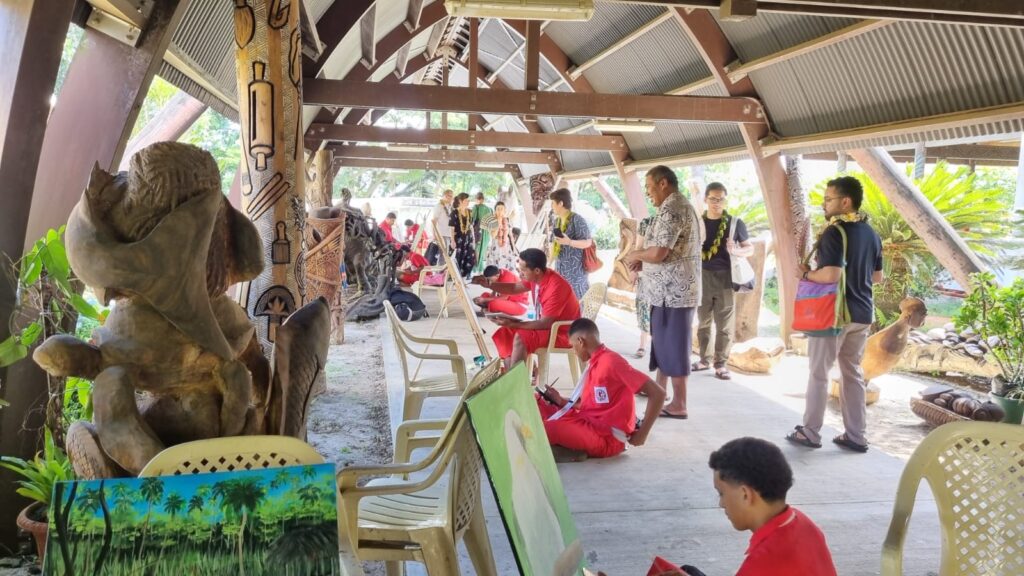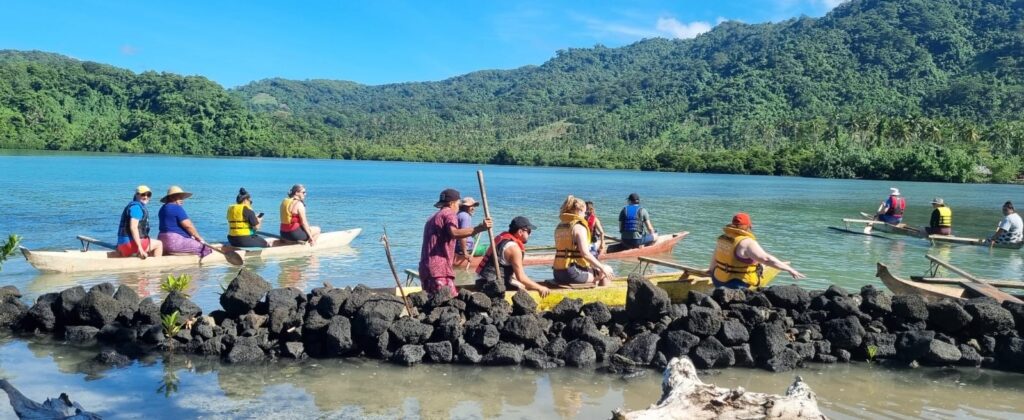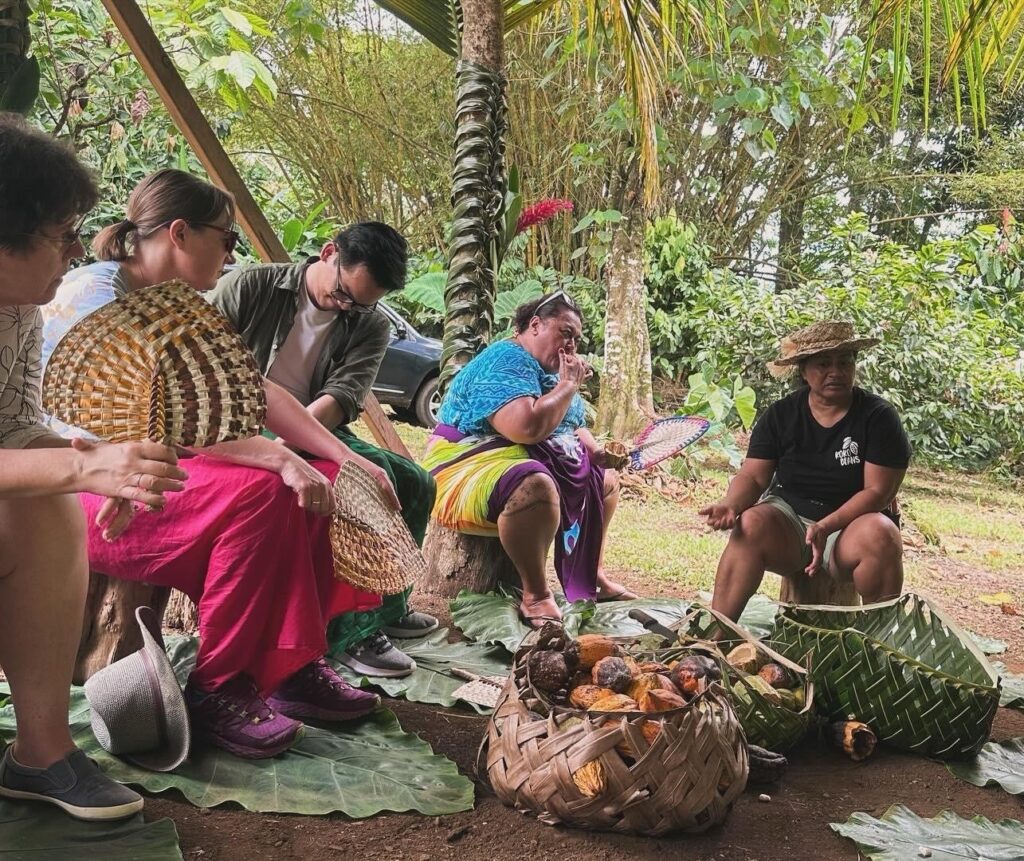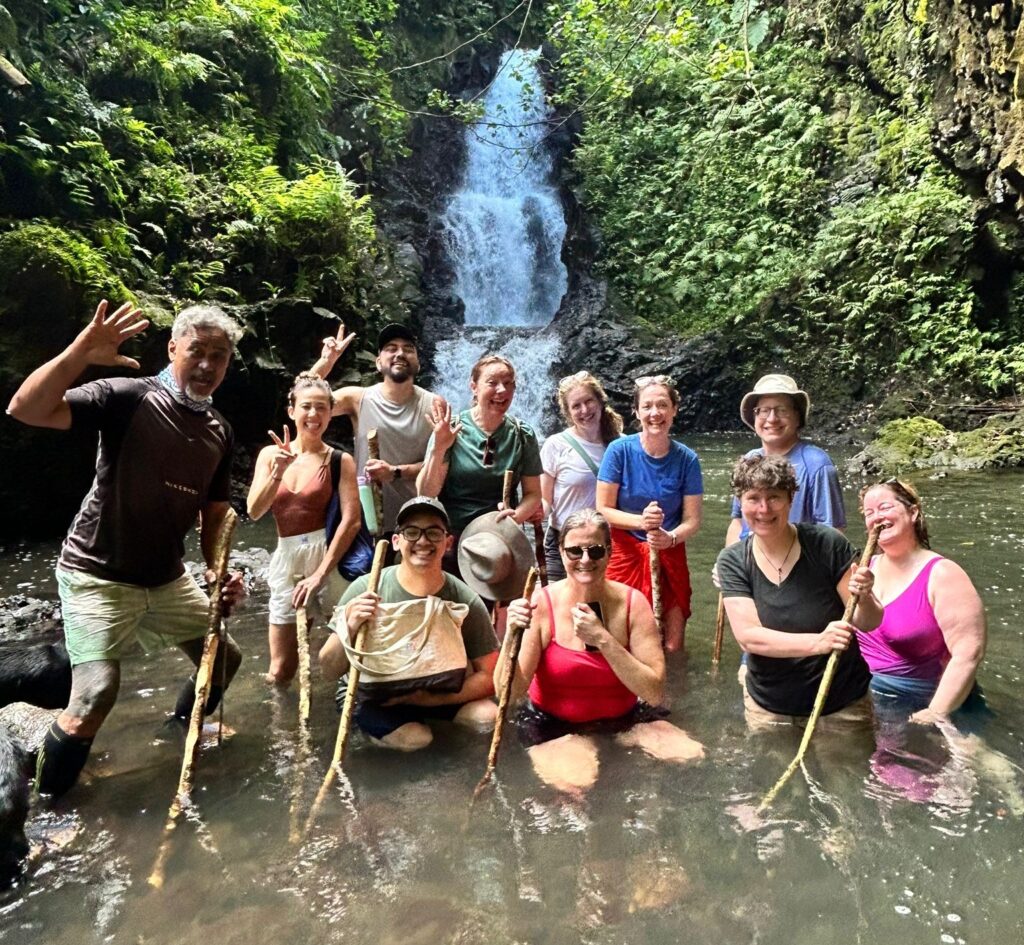Study abroad advisors experience what makes SIT Samoa special
May 1st, 2024 | SIT Study Abroad

This spring, a group of study abroad staff and faculty from around the country visited SIT in Samoa. They heard from staff, faculty, and key lecturers; joined students for discussions on climate issues in the South Pacific; visited local partners; and met homestay families. As they explored a non-traditional location for academically rigorous, culturally immersive learning, they came away with a deeper understanding of what students can experience during a semester on SIT's Samoa: Social and Environmental Change in Oceania program.
A Samoan welcome
When students arrive, they are brought into the local community and learn the best ways to think and act reciprocally. An important part of this is deconstructing Western students’ preconceptions of communities like Samoa. At the start of the semester, Dr. Maria Kerslake, a community development specialist and former professor with the National University of Samoa, asks students if they think Samoa is poor. Students often say yes and point to small tin-roof buildings and the lack of large metropolitan centers as general signifiers of local poverty. But by the end of the program, students often change their answers and as they start to identify kinship, the environment, and indigenous knowledge as indictors of wealth.

Site visitors followed a similar journey as they spent a week learning how life in Samoa inherently incorporates key aspects of community, sustainability, and resilience, all centered around Indigenous identity. A welcome ceremony filled with music and culture provided an opportunity for participants to experience the depth and resonance of community. Riding in canoes with guides through mangrove forests introduced the group to a unique and important kind of marine environment, allowing participants to see an area that is particularly susceptible to climate change. Lectures from local experts provided a deeper understanding of how life in Samoa often fluctuates between vulnerability and resilience. “People who live in challenging spaces may be stronger and more resilient,” says Dr. Anita Latai-Niusulu, associate professor of geography at the National University of Samoa.
Community and a network of care
SIT strives to cultivate a network of care through community, preparation, and communication, often through the program staff and SIT’s Student Health, Safety, and Well-being team. But students also find a community of local care formed by guest lecturers, guides, homestay families, and their fellow students. Given the strong focus on community building, students naturally become a part of a network of support, knowledge, and accountability, and students are invited to participate in community by performing Samoan dances, wearing Samoan clothing, and forming kinships with the people around them.

Learning the language is also an important part of how students find ways to be included in the larger community as it allows them to be more comfortable among their peers and host families.
The site visitors were able to see firsthand what these networks of care look like for students in Samoa. Meeting local SIT staff, lecturers, and guides reflected the collaborative care that students find throughout their semester. During dinners hosted by homestay families, visitors were given garlands, fed a home cooked meal, and saw first-hand how well the students had adjusted to life in a new place. They were also introduced to the language through songs that express “fa’asamoa,” or Samoan culture—the same songs taught to students by their instructors.
People who live in challenging spaces may be stronger and more resilient.
Dr. Anita Latai-Niusulu, associate professor of geography at the National University of Samoa
Sustainability and Indigenous knowledge
A semester in Samoa allows students to hear perspectives on social transitions, conservation, and resilience from Samoans and other Pacific Islanders, providing an alternative perspective to issues they study on their home campuses.
“Students arrive armed with Western theory...the important thing for us is Indigenous knowledge. That is our method of sustainability and development,” says SIT Academic Director Dr. Fetaomi Tapu-Qiliho.

Site visitors were able to hear more about what this means at the panel “Decolonizing Perspectives of Oceania.” The discussion provided an in-depth look at the research backgrounds and expertise faculty and guest lecturers bring to SIT students. Topics of research included recontextualizing Indigenous knowledge and practices to properly represent the importance of Samoans and their culture, how life in Samoa often fluctuates between vulnerability and resilience, and how the health of the land affects the Samoan people.
Through canoe rides through mangrove forests, touring a cocoa and coffee farm, and snorkeling among giant clams, visitors saw how Fetaomi's focus as an educator is to provide an “alternative way of being human.”
See for yourself
Joining a group site visit to an SIT program is a great way to learn more about what your students can experience during their study abroad program. Individual site visits are alternatively available, and SIT’s team can work with you to craft one-day visits focused on specific needs. More information can be found here. Plan a visit now by submitting your request!
